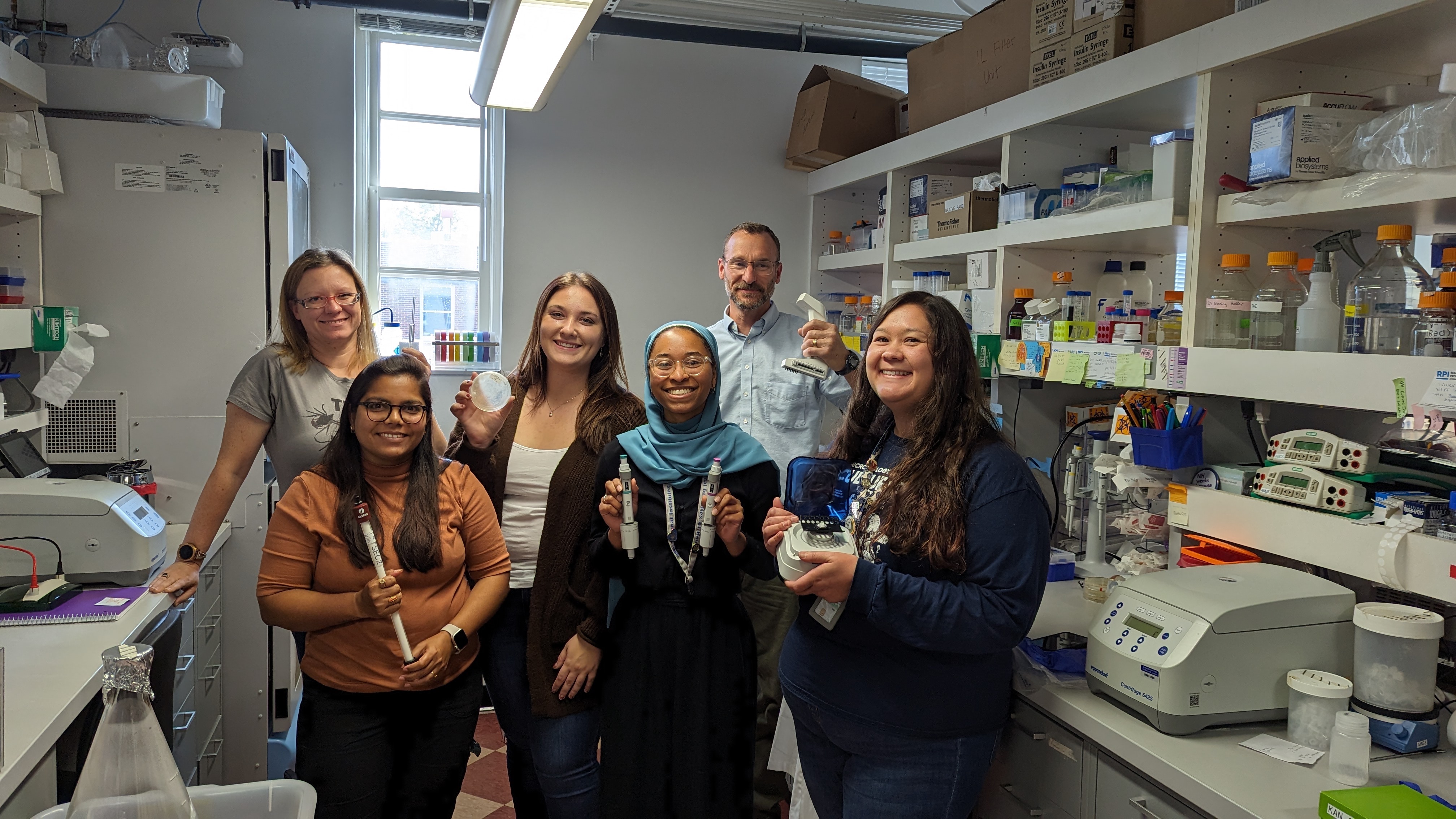Bacterial Physiology and Metabolism Unit
Established in 2021
Ashley Groshong, Ph.D.
Principal Investigator and Chief, Bacterial Physiology and Metabolism Unit

Major Areas of Research
- Nutritional uptake of Borrelia species within the mammalian host and tick vector environments
- Nutrients available to the spirochete during the enzootic cycle
- Modulation of gene expression in response to changes in the host and/or vector environments
Program Description
The Borrelia spirochetes are responsible for two different diseases states: Lyme disease and relapsing fever. Lyme disease is primarily caused by the host’s immune response to the presence of the spirochete, Borrelia burgdorferi. The bacteria are transmitted by the hard tick Ixodes spp. and can pervasively disseminate throughout the host colonizing most tissues. During colonization of either the mammal or tick B. burgdorferi is wholly dependent on nutrient acquisition from these environments during its lifecycle. Dissecting and understanding the nutrient requirements and acquisition pathways will provide insight into potential therapeutic avenues that could be utilized in clinical cases or even environmental interventions. Relapsing fever is caused by the relapsing fever Borreliae such as Borrelia hermsii. In contrast to Lyme disease, these spirochetes are transmitted by the soft tick Ornithodoros spp. and are primarily blood-borne. These spirochetes are similarly limited in their nutrient biosynthesis pathways, requiring the bacteria to acquire these building blocks from its unique niches within the vector and host.
These studies currently focus on B. burgdorferi’s and B. hermsii’s amino acid acquisition pathways. The spirochetes are unable to synthesize their own amino acids; however, they only encode a few free amino acid transporters. Unlike other bacteria, B. burgdorferi is completely reliant upon a multicomponent peptide transporter to bring in the bulk of necessary amino acids. This discovery has prompted an investigation into peptide sources within the host and vector which sustains bacterial colonization throughout the enzootic cycle, specialized roles peptides and/or peptide uptake may play during infection and tick colonization, and supportive roles that the additional free amino acid transporters may play. Interestingly, B. hermsii has a significantly reduced peptide transport system in addition to similarly limited free amino acids transporters. We are working to understand how the unique mammalian and tick microenvironments for the two pathogens have influenced the evolution of these amino acid pathways and their differences.
Biography
Education
Ph.D., University of Arkansas for Medical Sciences
B.S., B.A., University of Arkansas at Little Rock
Dr. Groshong received a B.S. in Biology and a B.A. in Chemistry and English at the University of Arkansas at Little Rock. She began studying Borrelia burgdorferi and its virulence determinants during her Ph.D. in Microbiology and Immunology at the University of Arkansas for Medical Sciences. She completed a postdoctoral fellowship at the University of Connecticut Health Center where she studied B. burgdorferi gene regulation throughout the enzootic cycle and continued on as an Instructor of Basic Science, where she began developing her studies on amino acid acquisition by the spirochete.
Selected Publications
Groshong AM, Gibbons NE, Moore BP, Bellamy WT, Blevins JS. The plasmid-encoded members of paralogous gene family 52 are dispensable to the enzootic cycle of Borrelia burgdorferi. Infect Immun. 2024 Oct 15;92(10):e0021424.
Grassmann AA, Tokarz R, Golino C, McLain MA, Groshong AM, Radolf JD, Caimano MJ. BosR and PlzA reciprocally regulate RpoS function to sustain Borrelia burgdorferi in ticks and mammals. J Clin Invest. 2023 Mar 1;133(5):e166710.
Groshong AM, Grassmann AA, Luthra A, McLain MA, Provatas AA, Radolf JD, Caimano MJ. PlzA is a bifunctional c-di-GMP biosensor that promotes tick and mammalian host-adaptation of Borrelia burgdorferi. PLoS Pathog. 2021 Jul 15;17(7):e1009725.
Groshong AM, McLain MA, Radolf JD. Host-specific functional compartmentalization within the oligopeptide transporter during the Borrelia burgdorferi enzootic cycle. PLoS Pathog. 2021 Jan;17(1):e1009180.
Caimano MJ, Groshong AM, Belperron A, Mao J, Hawley KL, Luthra A, Graham DE, Earnhart CG, Marconi RT, Bockenstedt LK, Blevins JS, Radolf JD. The RpoS Gatekeeper in Borrelia burgdorferi: An Invariant Regulatory Scheme That Promotes Spirochete Persistence in Reservoir Hosts and Niche Diversity. Front Microbiol. 2019 Aug;10:1923.
Groshong AM, Dey A, Bezsonova I, Caimano MJ, Radolf JD. Peptide Uptake Is Essential for Borrelia burgdorferi Viability and Involves Structural and Regulatory Complexity of its Oligopeptide Transporter. mBio. 2017 Dec;8(6):e02047-17.
Research Group
Our current lab is comprised of people from a variety of scientific backgrounds. Each of our current lab members specialize in their own project with a focus on dissecting and understanding the nutrient requirements and acquisition pathways within the two Borrelia species, Borrelia burgdorferi and Borrelia hermsii.


